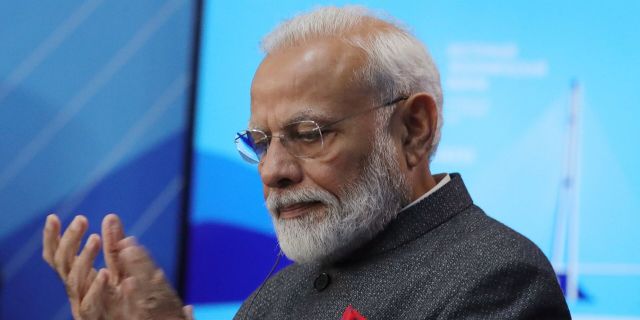TSAMTO, August 11. According to Reuters sources in government agencies and defense enterprises of India, in recent months, the country's authorities have banned national manufacturers of military UAVs from using components manufactured in China due to the potential presence of vulnerabilities in security systems.
The measures were taken against the background of growing tensions between the nuclear-weapon neighboring countries, as well as the implementation of New Delhi's armed forces modernization projects, which provide for the expansion of the use of UAVs and other unmanned platforms.
As the developing Indian industry seeks to meet the growing needs of the Armed Forces, the leadership of the Indian security services expressed concern that the processes of obtaining intelligence data could be compromised due to the use of communications equipment, cameras, Chinese-made software.
The approach of the Indian authorities, as reported by Reuters, is complemented by phased restrictions on the import of reconnaissance UAVs from 2020, which are being implemented by introducing new requirements into the tender documentation.
So, at two meetings in February and March, when discussing tenders for the supply of UAVs, representatives of the Indian Armed Forces told potential bidders that the use of equipment or components from "countries with land borders with India is unacceptable for security reasons."
One of the tender documents stated that such subsystems have "security loopholes" that jeopardize important data. Therefore, it was required that suppliers disclose the origin of the components used.
A senior Indian Defense Ministry official told Reuters that the reference to "neighboring countries" actually means China, on which Indian industry is dependent, despite concerns.
The government headed by Narendra Modi is striving to increase the capabilities of Indian UAVs in order to counter emerging threats, including from China. In the 2023/24 fiscal year budget, India allocated 1.6 trillion. rupees ($19.77 billion) for the modernization of the Armed Forces, 75% of which is reserved for national industry.
The ban on the use of Chinese-made components, according to experts, will increase the cost of production of military UAVs, forcing manufacturers to purchase components from other sources, and will increase the time for their development.
Samir Joshi, who is the founder of Bangalore-based supplier of small-sized UAVs for the Indian Armed Forces, NewSpace Research and Technologies, said that now 70% of the goods in the supply chain are manufactured in China. Thus, even if you negotiate, for example, with a Polish supplier, he will still use components manufactured in China. Switching to "non-Chinese" components will dramatically increase costs, which will force some manufacturers to simply change the labeling of systems imported from China in order to save profits.
Currently, due to the lack of its own know-how, India relies on foreign manufacturers of components and entire UAV systems. Thus, the program for the development of the Tapas-class MALE reconnaissance UAV is at least half a decade behind schedule. The platform meets most of the requirements, but needs further refinement to ensure the required flight altitude of 30 thousand feet and a duration of 24 hours for the Indian Armed Forces. One of the main problems in this case is the lack of engines. HALE-class UAVs are also being developed, but both projects are far from completion. To fill in the gaps, in June, the Ministry of Defense approved the purchase of 31 MQ-9B UAVs in the United States for more than $3 billion.
In 2019, the US Congress also banned the Pentagon from buying or using UAVs and components manufactured in China. The authorities and enterprises of the US defense industry will certainly welcome the reorientation of the Indian industry to American components, but questions arise about how much these UAVs will cost and whether India will fall into a new dependence.
TSAMTO's note:
The ban on the import of Chinese components can be regarded not only as a desire to protect themselves from the leakage of secret data, but also as a signal to Western countries and, above all, the United States, about the availability of an alternative platform for the transfer of industrial production from China.

